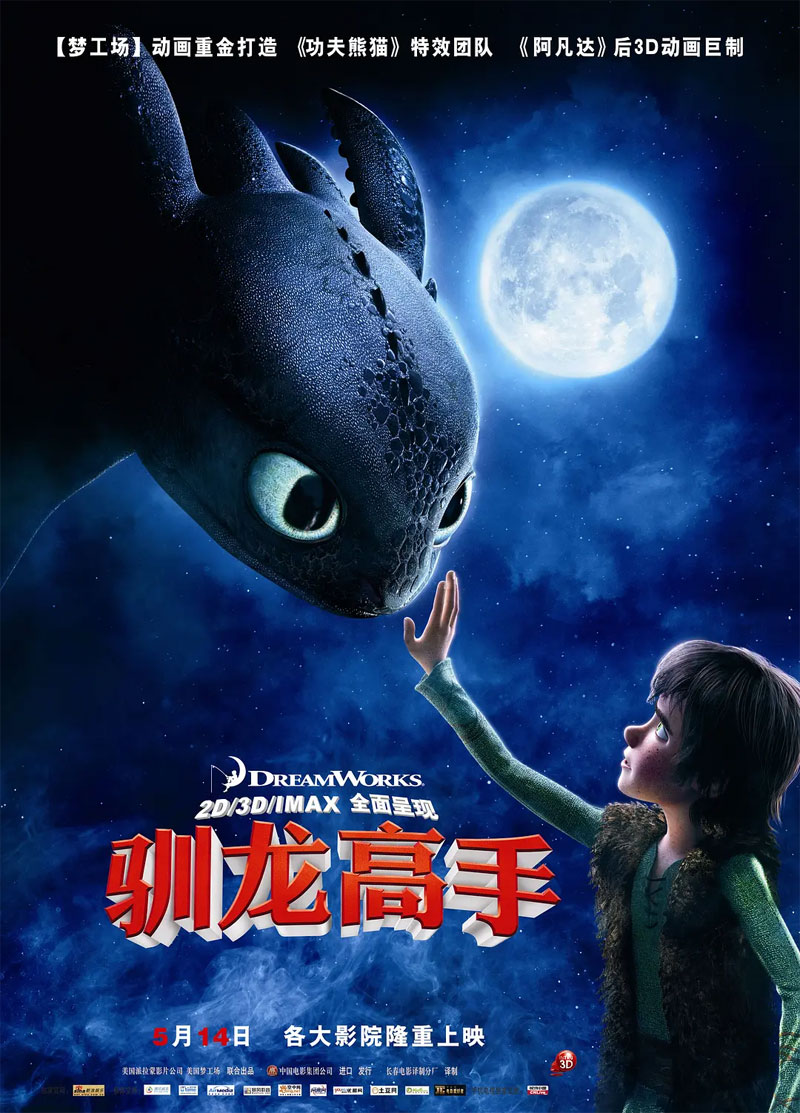Film Name: 驯龙高手 / How to Train Your Dragon

Regarding “How to Train Your Dragon,” some call it a bottle of “aged vinegar,” others label it a “masterpiece that never quite made it,” but I’ve never heard anyone dare to make such a comment about another familiar “masterpiece” we all know—Slam Dunk. Though comparing “How to Train Your Dragon” and “Slam Dunk”—two films entirely distinct in format and subject matter, yet coincidentally sharing similar-sounding titles in Chinese due to translation—may invite considerable criticism, I still find this comparison valuable. It’s not merely a clash between a dragon tamer and a basketball ace, but a showdown between two animation powerhouses: America and Japan.
The narrative of “How to Train Your Dragon” reveals that American animated films are sinking into a quagmire—one where the creation of an entirely new world is mistakenly prioritized over the film’s core story. This trend began with Pixar’s “Cars” series. Back then, the sheer novelty and unprecedented visual spectacle of seeing worlds filled entirely with cars, monsters, or marine creatures overshadowed audiences’ expectations for the plot itself. As Americans endlessly replicated this approach, the novelty of these alternate worlds gradually diminished in viewers’ minds, while the demand for compelling storytelling rose to become the primary audience expectation. DreamWorks’ recent works, such as Kung Fu Panda and How to Train Your Dragon, have undeniably become overly formulaic. Their narratives follow a single-threaded progression, with all conflicts revolving solely around the protagonist. Beyond the novelty of their worlds, audiences find little in the way of fresh storytelling.
How can we enrich plots and inject genuine innovation? I believe the key lies in the core element of drama: conflict. In “How to Train Your Dragon,” nearly all conflicts revolve around the protagonist, Hiccup: – The conflict and resolution with his father (the father expects his son to become a Gallic hero, but the son consistently disappoints; then the father mistakenly believes his son has truly inherited his legacy; finally, the son changes his father’s perception) – The conflict and resolution with the Night Fury (capturing the Night Fury, then releasing it; building a connection and becoming friends; ultimately fighting together) the emergence and resolution of his conflicts with his companions (from being looked down upon and bullied, to becoming a dragon-taming hero admired by all, then facing suspicion about how he acquired his dragon-taming skills, and finally gaining genuine loyalty). While these conflicts appear diverse, when they all occur within a single character, the plot feels overly simplistic—too linear and too fairy-tale-like. Only when conflicts unfold across multiple characters in intricate ways, or when novel approaches to conflict development are introduced, can a story truly captivate.
Take last year’s wildly popular Japanese animated film “Summer Wars” as an example: the male protagonist actually carries only a small portion of the conflicts. The conflicts between him and the female lead, between him and the hackers of the OZ world, and between him and the female lead’s family are all significant. Yet, the majority of the conflicts are borne by the supporting characters in the film. For instance, the dependent relationship between the family members and the matriarch, the head of the household, or the shift in the family’s attitude towards Wataru, whom they had previously rejected. These dispersed conflicts weave the plot like threads tangled in a dense web, or like multiple pillars supporting a structure. After watching, it leaves you with a flood of thoughts and a mix of emotions.
Take another example from the Oscar-unrecognized animated film “Mary and Max”: the conflict between its two protagonists spirals through their exchange of letter after letter, a novel approach to conflict development that feels remarkably nuanced. Moreover, the film meticulously depicts the worlds surrounding each character, detailing their individual conflicts within their own small spheres. This depth of storytelling far surpasses the linear narratives typical of American animation.
If an animated film only features conflicts between A and B, A and C, and A and D, it becomes biographical in nature. But animation isn’t about creating biographies; the purpose of inventing new worlds isn’t merely to tell simple stories within them. It should instead explore the complex tapestry of human existence and its inherent conflicts within these entirely new universes. If every film were made like How to Train Your Dragon, it would offer only entertainment value, not artistic depth—the so-called father-son bonds, camaraderie, and human-pet relationships have all been explored in earlier films.
The true brilliance of Japanese animation often lies in crafting not just a new world, but a world teeming with intricate contradictions—not a hollowed-out fantasy realm centered around a single conflict. Sometimes, Japanese animation doesn’t even focus as much on world-building as American animation does, instead dedicating its energy to creating emotionally resonant conflicts. Consider the depth and breadth of each character in Slam Dunk, the intricate late Edo period society depicted in Samurai X: Trust and Betrayal, or how every character in Princess Mononoke represents distinct factions with differing ideals and pursuits. These stories unfold in ancient times, modern eras, or the present day; in jungles, city streets, or school campuses. Whether the worldview is familiar to us isn’t the most crucial factor. What truly captivates audiences is the richness of the conflicts and contradictions within the story.
If American animated films continue to wallow in the quagmire of fantasy worlds, they will become the chicken ribs of animation—something neither here nor there.
Please specify:Anime Phone Cases » How to Train Your Dragon 2010 Animation Film Review: Where “How to Train Your Dragon” Falls Short Compared to “Slam Dunk”